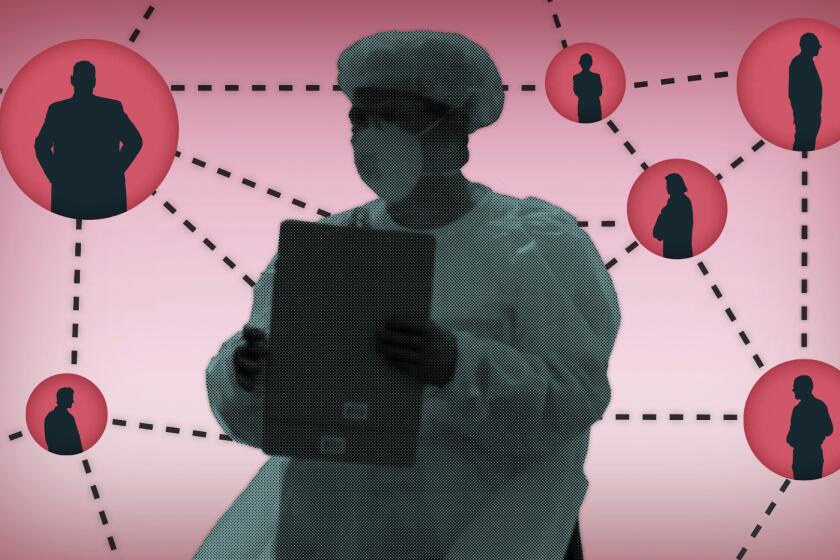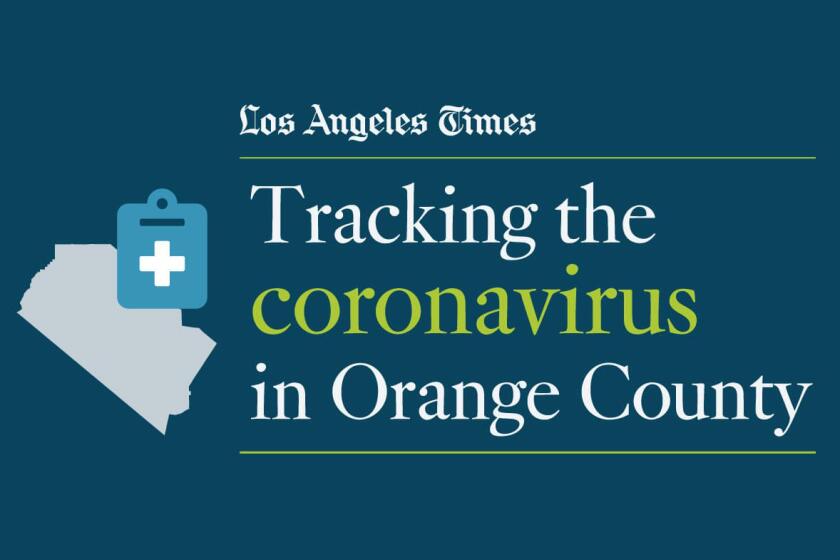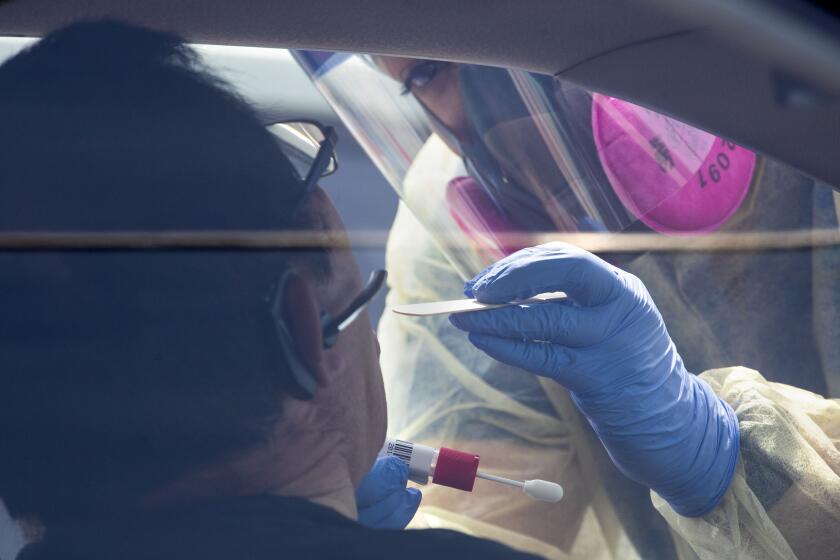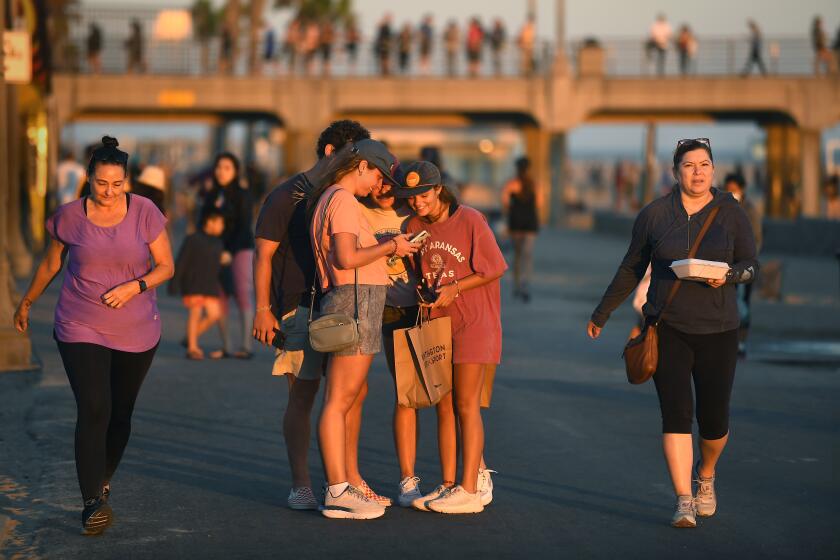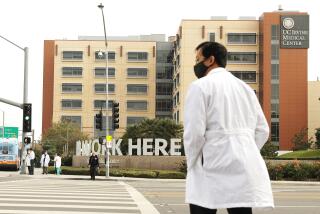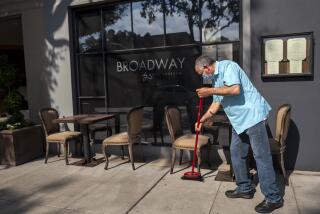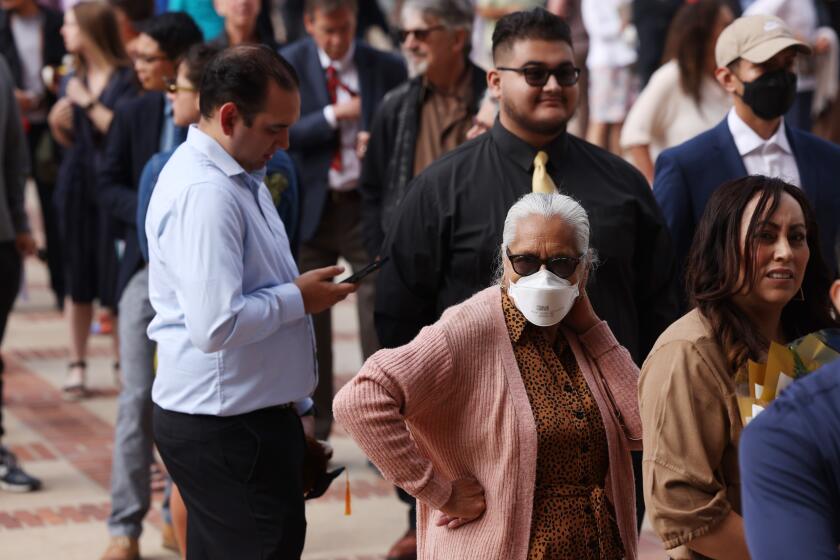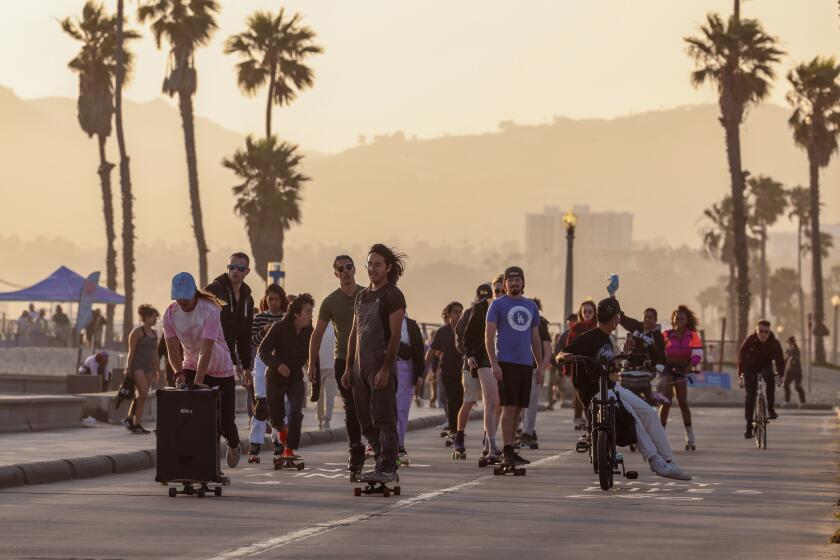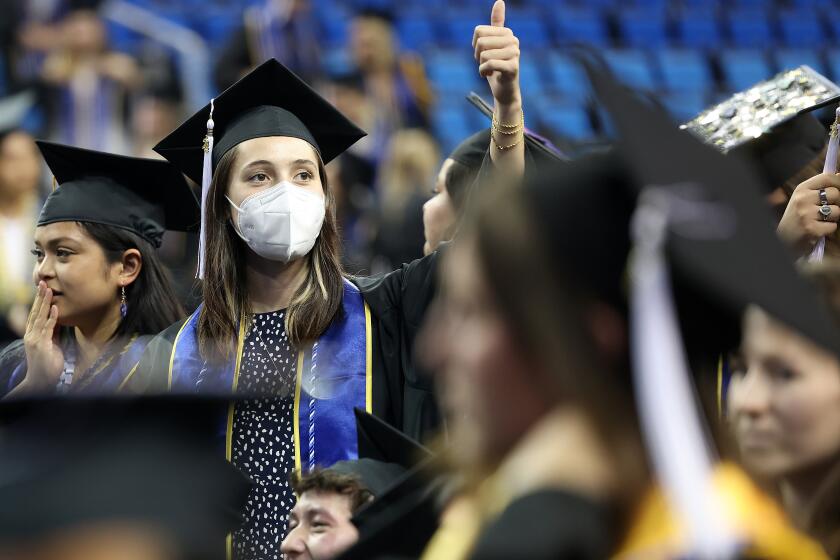‘Everywhere you go you’re at risk’: Orange County coronavirus surge worsens as officials struggle to trace infections

Amid a recent surge in coronavirus cases, Orange County is struggling to determine precisely where residents are being infected, its top health official said this week.
Health officials say contact tracing, as the practice is known, is a vital tool in stemming the spread of COVID-19 as it allows those who have come into contact with a confirmed case to monitor themselves for symptoms and take steps to make sure they don’t infect others in turn.
Establishing exactly where a person may have been exposed has proved to be a significant challenge, however — particularly once residents started intermingling more as businesses and public spaces reopened, according to Dr. Clayton Chau, director of the Orange County Health Care Agency and acting county health officer.
“It’s quite difficult, even the person themself would not know,” he said during a briefing Thursday. “‘Well, I was at the bar; I was at the beach; I was here; I was there, where did I get infected?’ It’s a very difficult question to decipher, and all case investigators and tracers do their best to try to ask people, ‘Where were you at so we can pinpoint?’ But, as far as I know, we can’t really pinpoint.”
The goal of contact tracing is to alert people who may have been exposed to someone with the coronavirus, and prevent them from spreading it to others.
Another challenge of contact tracing is the sheer number of infections.
Orange County health officials announced 905 new COVID-19 cases on Thursday alone — boosting the region’s cumulative count to 32,648.
That number includes 543 deaths, 22 of which were reported Thursday. An estimated 17,091 people have recovered from COVID-19 to date, according to the Health Care Agency.
Chau said health officials see patterns tied to events — such as increases in infections after the Memorial Day or Fourth of July holiday weekends — but “people are just everywhere, so it’s very hard to really pinpoint one activity that caused the infection.”
“Transmission is in the community now, so everywhere you go you’re at risk,” he said.
To augment its efforts, Orange County recently retained the services of a firm called Trace, which will put 33 more case and contact tracing investigators at the county’s disposal as early as next week “with the possibility of scaling up as needed,” Chau said.
He added that 568 public health staff have been trained on such investigations, “but the majority need to remain in their current capacities to ensure that we continue other public health programs and services.”
The latest maps and charts on the spread of COVID-19 in Orange County, including cases, deaths, closures and restrictions.
The process works like this: After someone tests positive for the virus, a contact tracer would get in touch with them to try and determine where they have been and who they were around.
Those individuals would then be asked to self-isolate, monitor themselves for symptoms and get tested if needed. For those showing symptoms, tracing would start again.
There are inherent challenges in the process. For starters, residents may struggle to recall exactly where they were or who they were with days or even weeks ago.
Some public health officials also have reported issues with residents withholding requested information — particularly if they’re concerned it will somehow be used against them or shared with other governmental agencies.
Officials in Riverside County put out a public call to urge residents to cooperate with contact tracers earlier this month.
“This information is critical as we work to slow and eventually stop the spread of coronavirus,” Kim Saruwatari, director of Riverside County Public Health, said in a July 7 statement. “It is understandable that patients may be reluctant to discuss sensitive issues, but it is very important that this information is provided.”
California failed to establish an effective coronavirus testing system early on, leaving it far behind — even now — in the fight against COVID-19.
Public health officials say it’s important that residents continue to take steps to protect themselves and those around them from the coronavirus by regularly washing their hands, wearing face coverings when outside in public and keeping their distance from people they don’t live with.
Those messages haven’t always resonated in Orange County, though, where at times there’s been strident public opposition to some of the regulations imposed during the coronavirus crisis — particularly the idea of wearing masks.
As infection rates soar in Orange County, residents of Surf City doubt the severity of the pandemic and call for easing restrictions.
Chau said it’s incumbent on residents to comply with relevant health orders if the county is to move forward.
“Hopefully, the community will realize that, together, in order for us to be able to drive the number down so we can reopen some of the business sector that has been dimmed, everybody has to do your part,” he said. “And I hope people realize that ... your decision not to participate costs the community dearly. As you see the number go up, we’ll shut down businesses and, in the end, we all get hurt together.”
The Associated Press contributed to this report.
More to Read
Start your day right
Sign up for Essential California for news, features and recommendations from the L.A. Times and beyond in your inbox six days a week.
You may occasionally receive promotional content from the Los Angeles Times.
